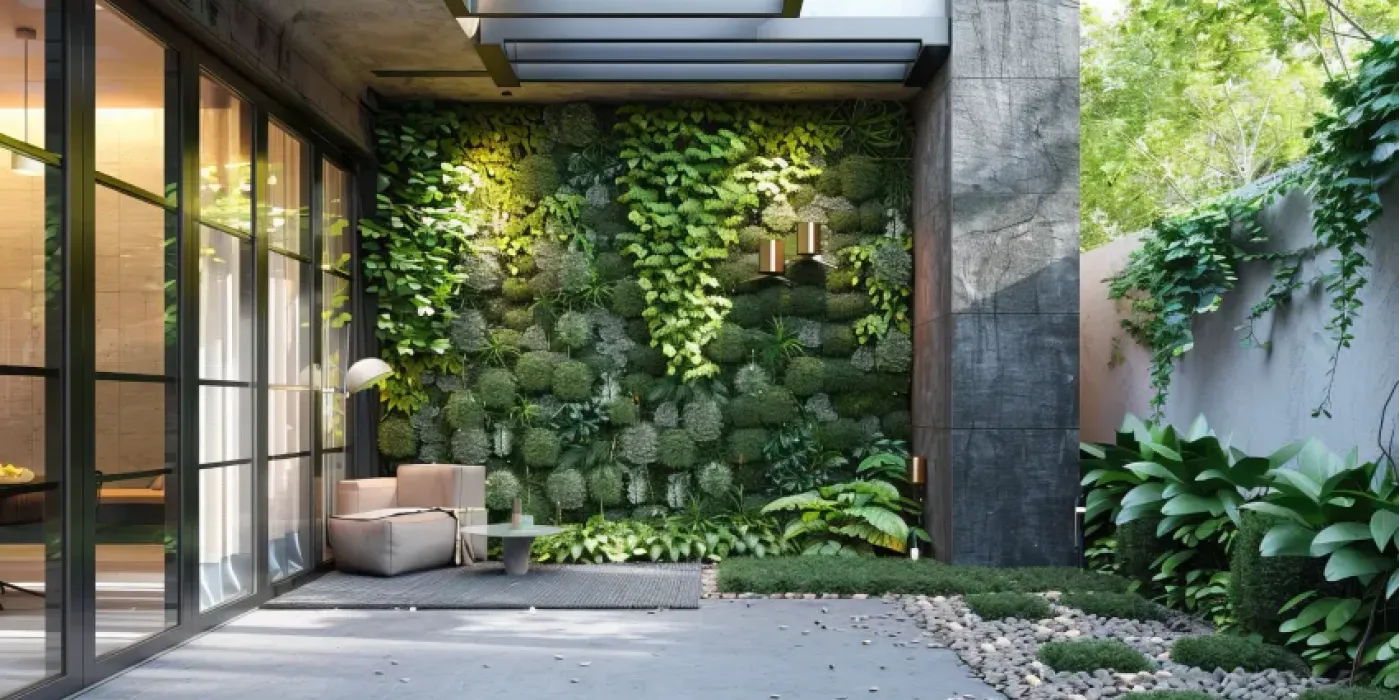Vertical Garden Ideas: Creative Ways to Maximize Space

Have you ever looked around your outdoor space and wished you could squeeze more green into it? Whether working with a tiny balcony or a small backyard, vertical garden ideas offer an inventive solution to make the most of every inch. Here is a look into vertical gardening, exploring everything from unique supports to ideal plant choices and weighing the benefits and drawbacks.
What Is Vertical Gardening and How Does It Work?
Vertical gardening is a creative and efficient way to grow plants upwards rather than spreading them across the ground, making it an ideal solution for small spaces for gardens. This technique uses structures like trellises, plant walls, or repurposed items such as pallets and old furniture to maximize vertical space. Perfect for gardening in small spaces, this method allows you to grow flowers, herbs, vegetables, and fruits in urban environments or areas with limited room. By growing plants vertically, you reduce the amount of ground space required while significantly increasing your gardening potential.
Different Types of Vertical Garden Supports
The backbone of any vertical garden is its support system. The types of vertical garden supports can vary widely depending on your design preferences and practical needs. Traditional trellises and arbors are popular choices, offering sturdy frameworks for climbing plants. Hanging baskets and wall-mounted planters provide another layer of vertical interest and can be used to decorate exterior walls or balcony railings. For a more modern twist, modular plant walls and DIY frame supports can create a living art display that serves aesthetic and functional purposes.
Our solutions at Fox Hollow Landscaping and Design, Inc., cater to your space and style preferences. From the initial landscape design consultation to installation, our experts ensure your vertical garden thrives and transforms your space into a lush, vertical oasis.
Vertical Gardening Pros and Cons?
Like any gardening method, vertical gardening’s pros and cons should be considered. Here are some vertical gardening pros and cons. On the plus side, vertical gardens can greatly increase your planting area without requiring more ground space. They also improve privacy and can act as a natural air filter, improving your home’s air quality. Additionally, they can reduce your exposure to pests and ease the strain of bending and kneeling.
However, vertical gardens require careful planning regarding water drainage and sunlight exposure. They may also need more frequent watering, especially if located under eaves or balconies. It’s important to consider these factors to maintain a healthy and vibrant garden.
Which Are the Best Plants for Vertical Gardens?
The best plants for vertical gardens are typically those that naturally climb or can be easily trained to grow upward. Some top choices include:
- Flowers: Petunias, morning glories, and ivy are excellent for adding color and texture.
- Herbs: Basil, mint, and thyme are great for kitchen use.
- Vegetables: Tomatoes, peppers, climbing peas, and beans are perfect for edible gardens.
- Fruits: Strawberries and dwarf fruit trees adapted for trellis growth can also thrive in vertical setups.
Fox Hollow Landscaping and Design, Inc. can help you choose the best plants for vertical gardens according to your specific climate and sunlight conditions, ensuring your vertical garden is beautiful and bountiful.
Contact us today to learn more about how we can help you design and implement your perfect vertical garden ideas. Whether selecting the right supports or choosing plants that will flourish, we are here to guide you in creating a stunning vertical landscape that saves space and adds an extraordinary touch to your home environment.